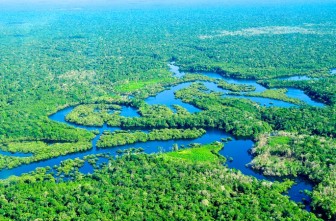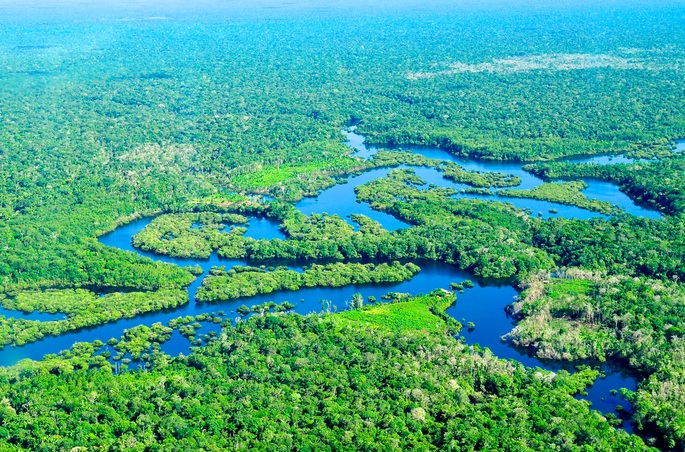
The Amazon River snakes its way across South America
Mark Schapiro’s job is to prevent murders.
He is not a cop, nor a judge or a psychological counselor. Actually, Schapiro is an award-winning environmental journalist.
Years ago, when Schapiro was collaborating with law enforcement officials in charge of enforcing environmental crimes, it dawned on him:
“Whether the murder of an ecological system that supports us, or really, literally, a killing,” Schapiro says, “the core of environmental journalism is investigating murder and stopping it in the future.”
That realization has informed Schapiro’s journalistic career and the fundamental questions he asks when beginning a story, such as: How do you hold those responsible for murders accountable? And what evidence can lead us down the trail of the violation we’re looking at?
Speaking at the eighth semi-annual Global Investigative Journalists Conference (GIJC2013) Sunday morning session on “Cutting-edge Environmental Reporting,” Schapiro said that mastering environmental investigations requires a “multidisciplinary journalistic approach.”
“Ultimately, environmental stories have a number of important components. They are stories about crime, money, finance and science,” he says, “and they almost always have an international component.
Precisely because journalists are not police officers, Schapiro says journalists don’t have to prove criminal activity. In some instances, the story turns out actually to be about asking why something is not a crime.
Two panelists showcased outstanding environmental journalism, exhibiting the various ways environmental journalists are working in 2013:
1) Subhransu Priyadarshini, science and health journalist from India’s Nature publication, exposed government denial of the submergence of a group of islands in Eastern India. The West Bengal Islands are the world’s only mangrove tiger-land and a UN Heritage site. Her story created international buzz, ultimately forcing the government to accept climate change as a reality and to release the West Bengal State Action Plan on Climate Change. This year, seven years after the first article, she revisited the topic for Nature. See her presentation, including tips for using science in environmental journalism.
2) Gustavo Faleiros, a Brazilian environmental journalist, specializes in data-driven journalism. As a Knight International Journalism Fellow, Faleiros launched InfoAmazonia, a digital map that uses satellite and other publicly available data to monitor the Amazon rainforest. Faleiros says “geojournalism,” or geotagged information, adds a contextual layer to environmental data that can inspire journalistic stories. During the panel, he also announced Oxpeckers.org, Africa’s first journalistic investigation unit focused on the environment.
 Jessica Weiss reports on this event as part of the IACC Young Journalists Initiative, a network reporting on corruption around the globe.
Jessica Weiss reports on this event as part of the IACC Young Journalists Initiative, a network reporting on corruption around the globe.


Pingback: African Journalism Unit Focuses on Environmental Threats | Global Investigative Journalism Conference 2013
Pingback: Good science & good journalism: what’s the link? : Indigenus